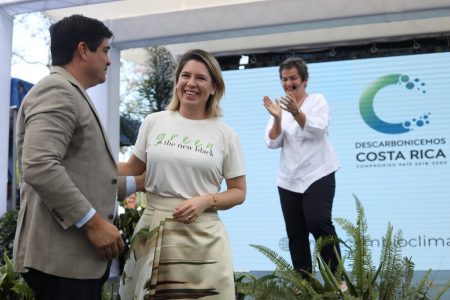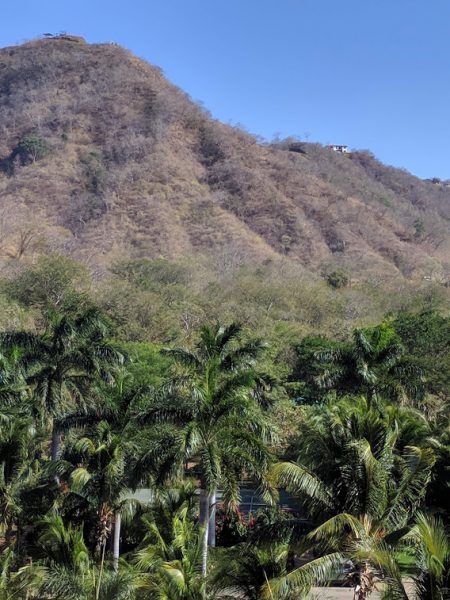March 12, 2019 – My wife and I just returned from a short one-week holiday in Costa Rica. We had originally planned for two but had to curtail that when my wife fell and suffered a concussion. Between my bad knee and her post-concussion syndrome, we were a bit of mess in trying to manage while down in my second favourite country in the world. But nonetheless, Costa Rica didn’t disappoint and we had our walks on the beach and swims in the pool at a nice resort in the country’s northwestern province of Guanacaste.
Prior to going, I had read a Reuters report dated February 25, 2019, in which the president, Carlos Alvarado, announced an economy-wide plan to decarbonize the entire country by 2050. The initiative is being driven by the First Lady of the country, Claudia Dobles. An urban planner by profession, Dobles wants the focus of Costa Rica’s next green strides to be on transportation.

Having visited Costa Rica over the last four years, and having seen the state of transportation in the country I am convinced Dobles is right. The country can make great strides toward zero emissions if it can make improvements to its transportation infrastructure.
One way would be to wean Costa Ricans from their automobiles. They love their cars with the average age of a vehicle topping 17 years. Everywhere your drive there is traffic and little attention seems to be paid to the rules of the road. When we visited San Jose last year, at times the traffic was as congested as the streets of New York, Chicago, Los Angeles or Toronto during the daily commutes. Only in San Jose, with the majority of vehicles appearing to be pretty old, the fumes from cars, buses, and trucks, created a smoggy haze which we could view when we looked back on the city from a nearby volcanic peak.
As for mass transit, Costa Rica has both a bus and railway network. The latter today operates using diesel locomotives with limited coverage. The last significant railway company suspended operations in 1995.
The road network like the railway is seriously deficient. Stray from the Pan-American Highway and driving turns into a harrowing road adventure. Secondary and tertiary roads go from asphalt-topped, to gravel, to nothing. When we visited four years we traveled to a spectacular waterfall just a few kilometers from Liberia, the capital of Guanacaste province. A road of a mere couple of kilometers took a considerable amount of time to negotiate. It was more a field of boulders interspersed with clay, sand, and gravel. On another trip to the interior of the country just two years ago, our drive took us several hours to cover no more than 10 to 15 kilometers, leaving us exhausted as we attempted to avoid numerous road obstacles large and deep enough to break an axle or puncture a tire.
So not only does Costa Rica have to make infrastructure improvements to both its road and rail networks it also has to get its citizens to give up driving their pollution-spewing clunkers in exchange for electric vehicles (EVs) and mass transit alternatives. It also means building a fast charge network, all of which is an ambitious undertaking for this nation of 5 million people.
The initial amount of money needed to achieve these ambitious plans is pegged at $6.5 billion over the next 11 years according to a March 12, 2019 article in the New York Times. For a Developing World country as small and as poor as Costa Rica, is the plan too ambitious?
Today Costa Rica has weaned itself off the use of fossil fuels for power generation relying heavily on hydroelectric, wind and geothermal power. Solar and power from biomass remain in their infancy. In its efforts to be fully off fossil fuels for electricity the country is First World. Even the most remote and humble Costa Rican homes have electric lighting.
But now comes a much tougher next step. Dobles envisions a new transportation network with a fully electrified rail system, a biking infrastructure, and country-wide fast charge stations on all major roads. It will certainly take more than $6.5 billion to achieve the 2050 goal of being the first zero-carbon nation. And that means the government needs to get a buy-in from Costa Ricans who will be asked to pay higher value-added, property, and income taxes. In a country that is pretty loosey-goosey about enforcing its regulations and collecting taxes owed, and where tax avoidance is commonly practiced by its citizenry, it will mean a behaviour change for the entire nation.
One potential source of funding could come from abroad. Today forest conservancy in Costa Rica is partially funded by wealthy nations and companies who are offsetting their carbon emissions by purchasing carbon credits through the preservation and expansion of the country’s dry and tropical rainforests. But with a land mass no bigger than the state of West Virginia, there is only so much money to be made from afforestation, reforestation, and preservation.
For Dobles, Costa Rica’s First Lady, she hopes to show the world that even a small nation can provide global-sized answers and overcome the negativity and chaos that surrounds the climate change issue and what can be done to mitigate it.
















